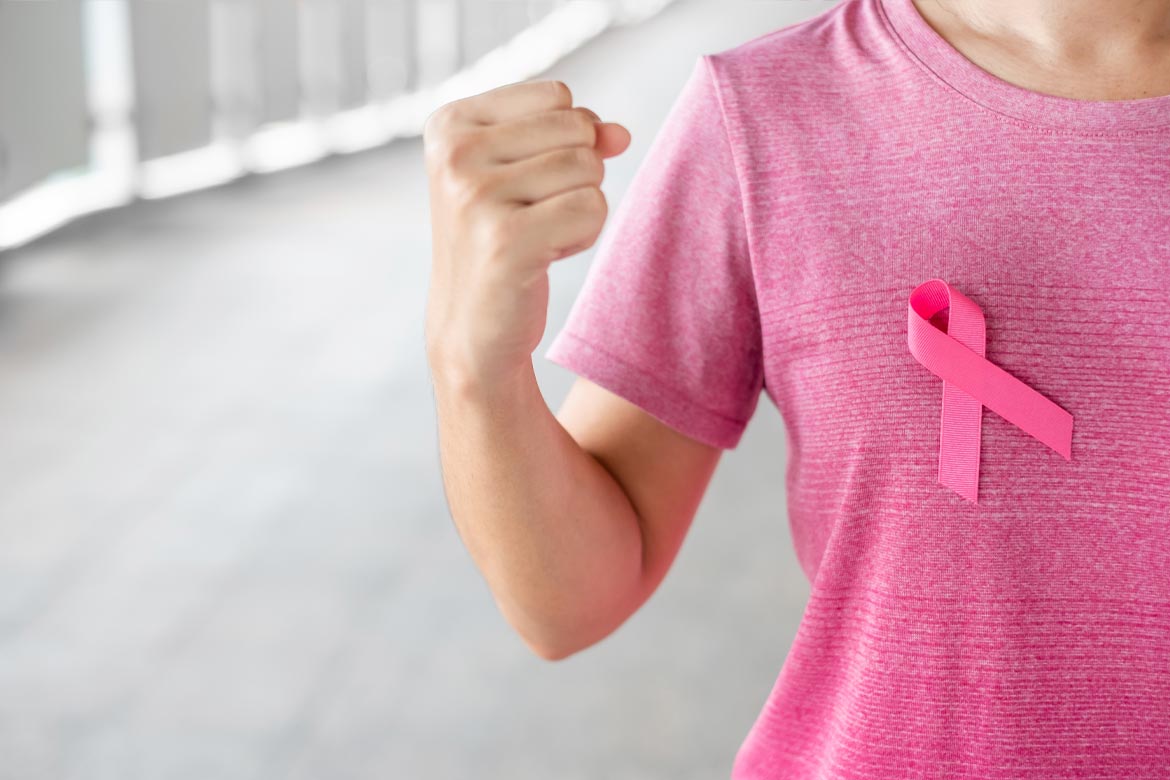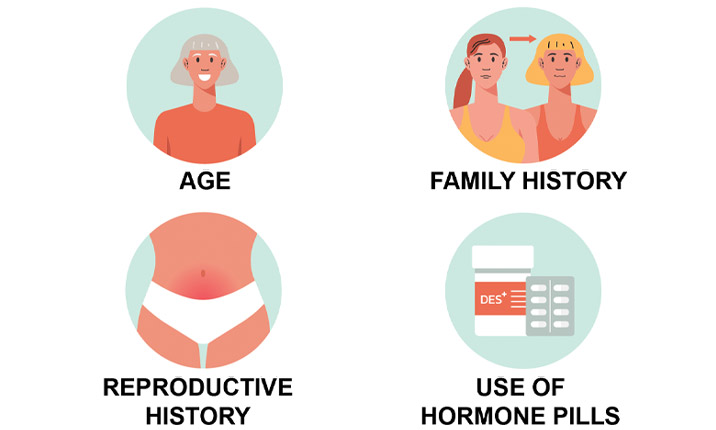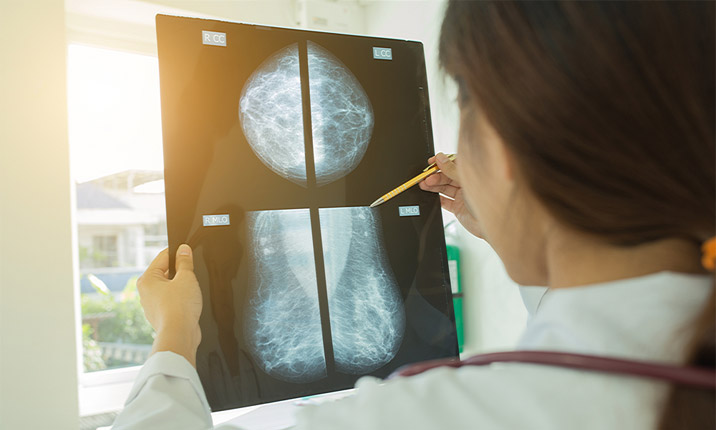
Breast Cancer Awareness: 7 Facts Women Need to Know | Health Plus
20 Oct 2020
Breast Cancer Awareness Month in October promotes breast cancer awareness. Did you know that breast cancer is the most common cancer diagnosed in women in Singapore? Learn more about the facts of breast cancer here.
1. Around 6 women are diagnosed with breast cancer each day in Singapore
Breast cancer is the most common cancer diagnosed in women in Singapore. From 2013 to 2017, breast cancer made up over 29% of all cancers diagnosed in women here. This is because of a good screening programme available to detect any suspicious changes in the breast tissue. Early detection of breast cancer at its early stages is crucial for better curative rates and treatment outcomes. Good screening programmes are also important and readily available in Singapore, enabling women to detect and diagnose any unusual changes in the breast.
2. How does breast cancer develop in the breast?
The female breast is made up of milk glands and ducts which are surrounded by a layer of fat. Milk is produced in the milk glands and is drained via ducts to the nipple. Breast cancer commonly develops within these milk ducts and glands and happens when breast cells start to grow abnormally, dividing rapidly. Similar to most cancers, the exact cause of breast cancer is unknown, although certain factors may increase your risk of developing breast cancer.
3. Risk factors for developing breast cancer

1. Age and Sex
Breast cancer mostly affects females but can also occur in men. The risk of breast cancer increases with age.
2. Family History
Having certain genes such as an abnormal form of BRCA1 or BRCA 2 greatly increases a woman’s lifetime risk of developing breast cancer. The likelihood of a woman in Singapore developing breast cancer in her lifetime is about 5%. However, if there is a family history of breast cancer, the risk is doubled. Women with a family history of breast cancer are recommended to start breast cancer screening 10 years before the age of the relative’s diagnosis for early detection.
3. Reproductive History
Early and prolonged exposure to oestrogen increases the risk of breast cancer. This can happen due to:
- Early onset of menstruation before age 11
- Not having children or having children after 35 years of age
- Menopause after 55 years old.
Breastfeeding, when maintained for more than a year, can protect against breast cancer.
4. Use of hormonal pills
Oestrogen and progesterone supplements may increase the risk of breast cancer. Women who are on Hormone Replacement Therapy (HRT) have a 30% Increased risk of breast cancer. However, this risk disappears 3 – 5 years after the cessation of therapy. Women intending to or undergoing HRT should discuss these concerns with their doctors.
Oral contraceptive pill usage, especially in young girls between 10 – 15 years old, may also increase the risk of breast cancer.
4. Breast cancer symptoms to look out for
Common signs and symptoms of breast cancer include:
- Skin changes, such as peeling, scaling, redness or dimpling of the breast
- Breast lump, which is usually painless and feels different from the surrounding tissue
- Bloody or unusual nipple discharge
- Nipple rash
However, not all breast lumps are cancerous. In fact, 8 out of 10 breast lumps are actually benign or non-cancerous.
5. How you can check for breast cancer
Women are advised to check their breasts monthly for breast lumps following the end of their menstruation. Applying light, medium and firm pressure, use the three middle fingers to feel over both breasts and the underarm area for any knots, lumps or abnormal thickening of breast tissue. Lightly squeeze the nipples to check for any abnormal discharge. If you notice any unusual symptoms, do see a doctor for further checks.
- Screening programme:
The mammogram is the most reliable screening tool for breast cancer and can detect the presence of cancerous lumps before they can be felt with the hand. A mammogram is a very low-dose X-ray of the breast. During a mammogram, the breast is compressed for the X-ray, which decreases the thickness of the tissue and holds the breast in position, so the radiologist can detect abnormalities more accurately. Routine mammograms are not recommended for women under the age of 40 for a few reasons. In such cases, younger women with dense breasts may be able to benefit from breast ultrasounds. However, ultrasounds are not a replacement for mammograms and mammograms remain the most effective method for early detection of breast cancer.
Women between 40 – 50 years old should have annual mammograms done while those above the age of 50 should have them done once every 2 years.
6. What to expect if the mammogram detect abnormal findings?

Should your mammogram pick up any abnormalities, you will be referred to a breast surgeon for further checks. The breast surgeon will take a detailed record of your medical history, perform a physical examination, and may require you to undergo further imaging scans and biopsy to determine the nature of the lump.
Common biopsy techniques include fine needle aspiration, core biopsy and excision biopsy.
7. Being diagnosed with breast cancer does not mean you have to lose your breast
With the advancement of technology and surgical techniques, mastectomy (breast removal surgery) is not required for treating all breast cancers. There is a variety of breast cancer treatment options available, which the breast surgeon will discuss in detail with you, including surgery, chemotherapy, radiotherapy and hormonal therapy.
Protect yourself from breast cancer
Despite the prevalence of breast cancer, being equipped with the facts and information on breast cancer is the first step towards protecting ourselves from breast cancer. Going for regular breast cancer screenings, conducting monthly self-examinations, and having a healthy diet and exercise routine are some other ways we can protect ourselves.
Make an appointment today to get your breast cancer screening. Early detection of breast cancer can make a significant difference.
Article contributed by Dr Michelle Nah, general practitioner at Parkway Shenton, Woodlands
References
Breast cancer. (2019, November 22). Retrieved September 11, 2020, from https://www.mayoclinic.org/diseases-conditions/breast-cancer/symptoms-causes/syc-20352470
Breast cancer. (2020, September 2). Retrieved September 11, 2020, from https://www.healthhub.sg/a-z/diseases-and-conditions/20/breastcancer
Breast Cancer: Symptoms and Risk Factors. (n.d.). Retrieved September 11, 2020, from https://www.healthxchange.sg/cancer/breast-cancer/breast-cancer-symptoms-risk-factors
Cancer Statistics. (2020, August 3). Retrieved September 11, 2020, from https://www.nccs.com.sg/patient-care/cancer-types/cancer-statistics
Chandra, A. M. (n.d.). Breast Cancer Screening: Which Method is Better. Retrieved September 11, 2020, from https://www.healthxchange.sg/cancer/breast-cancer/breast-cancer-screening-which-method-better




